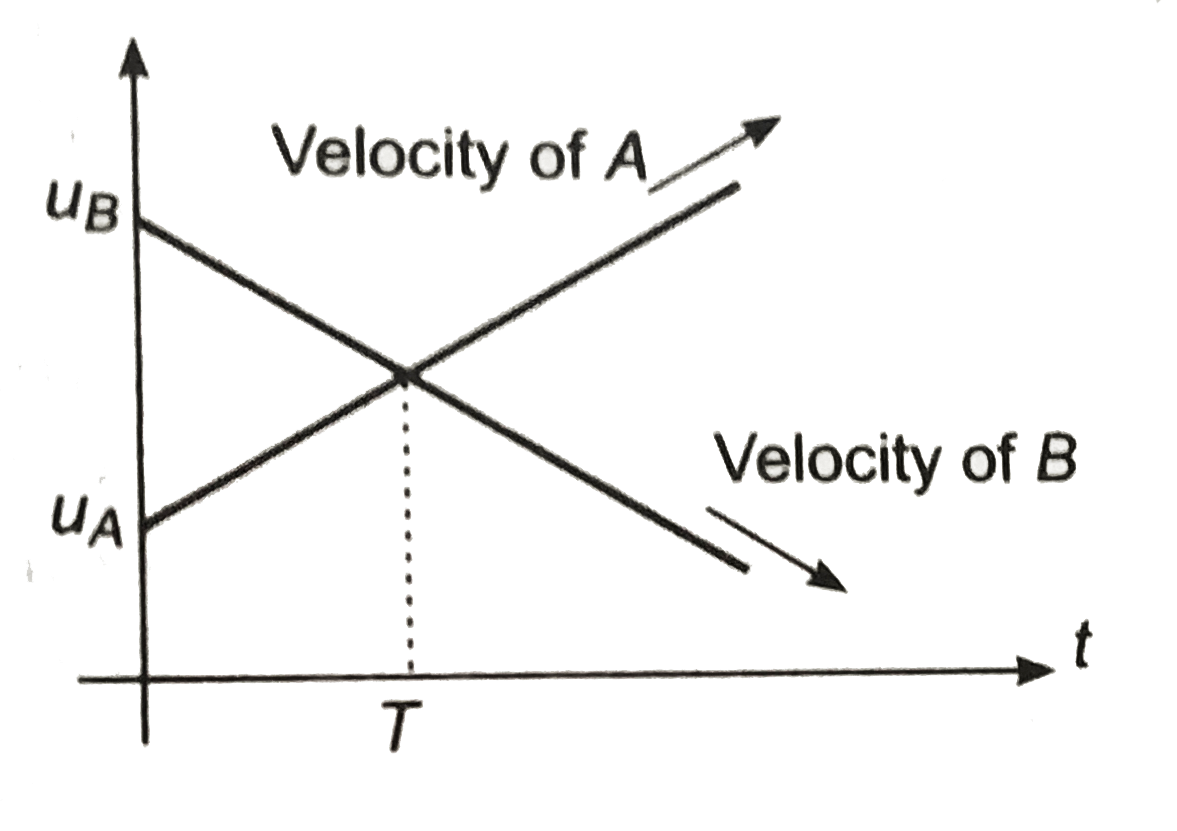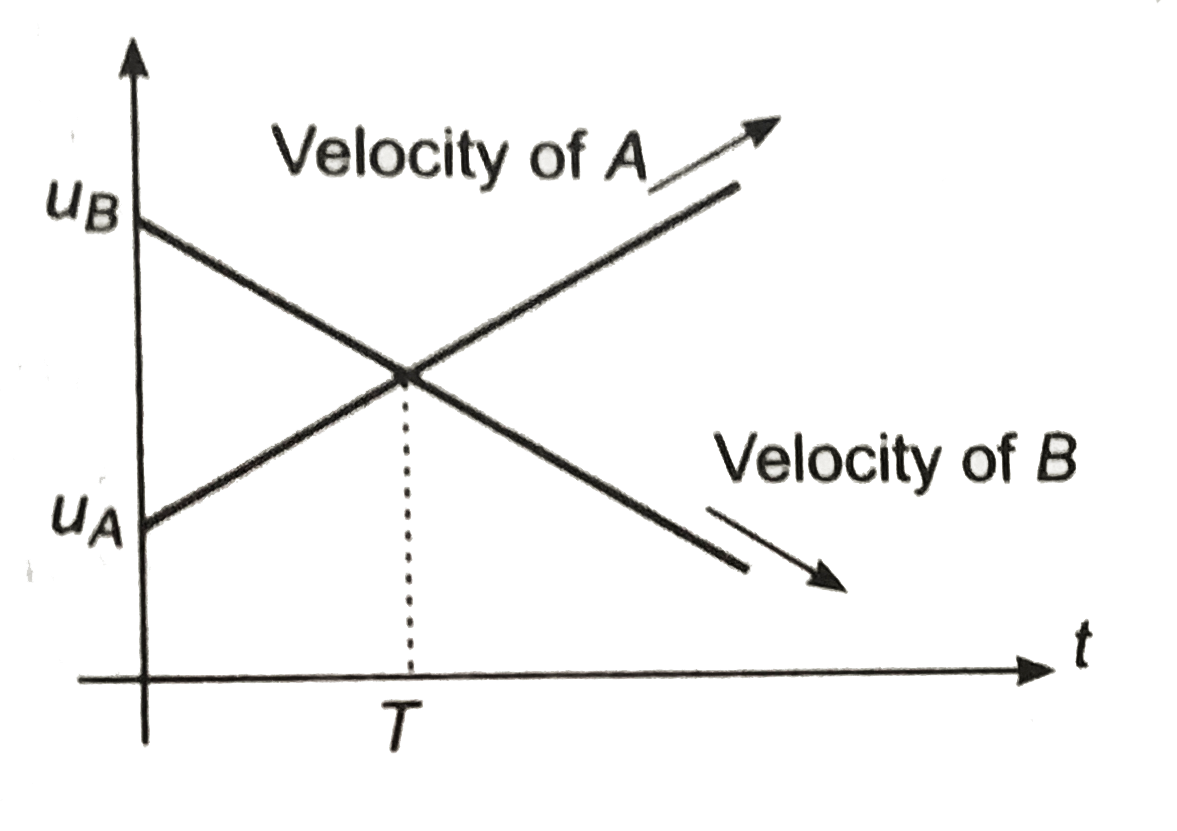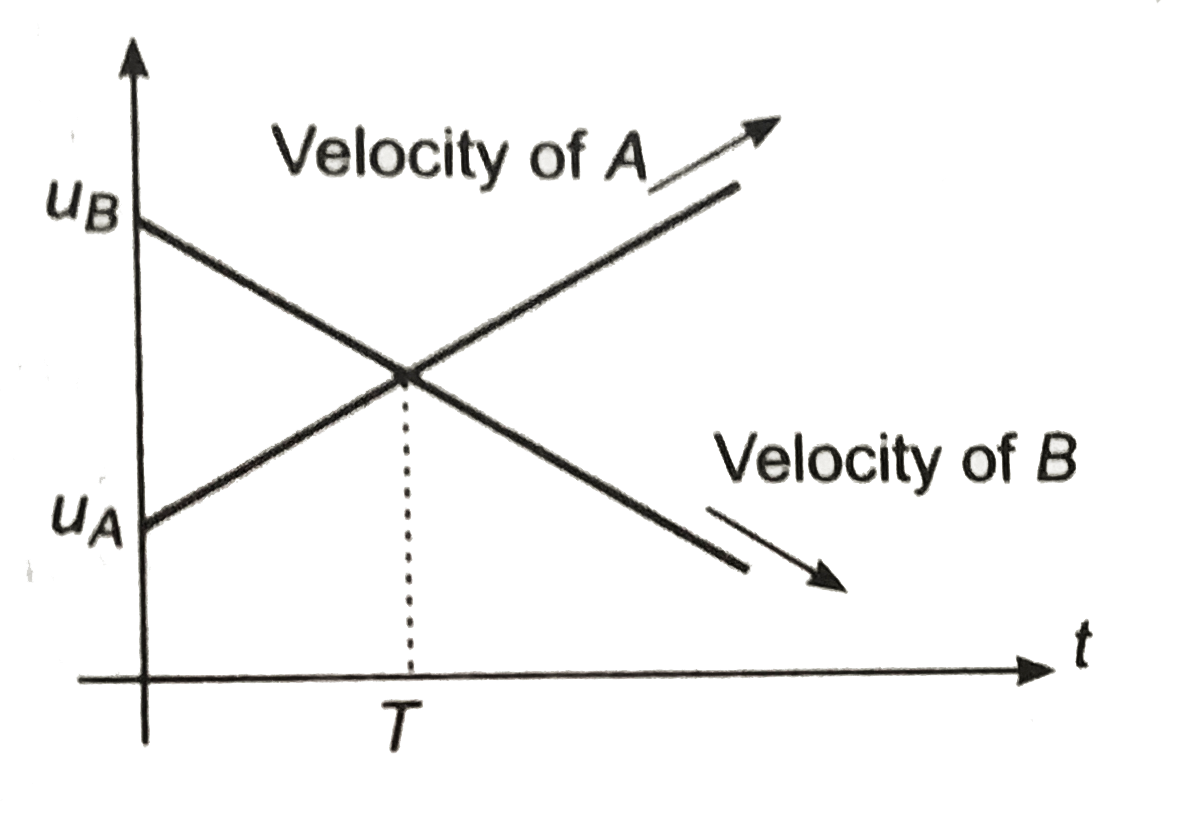A situation is shown in which two objects A and B start their motion from same point in same direction. The graph of their velocities against time is drawn. are the initial velocities of A and B respectively. T is the time at which their velocities become equal after start of motion. If the value of T is 4 s, then the time after which A will meet B is

12 s
6 s
8 s
data insufficient
The correct Answer is:C
Putting
we get
Now,
Topper's Solved these Questions
- BOOK - DC PANDEYCHAPTER - KINEMATICSEXERCISE - Subjective Questions24videos
KINEMATICS
- BOOK - DC PANDEYCHAPTER - KINEMATICSEXERCISE - SCQ_TYPE41videos
KINEMATICS
- BOOK - DC PANDEYCHAPTER - KINEMATICSEXERCISE - More Than One Correct6videos
KINEMATICS
- BOOK - DC PANDEYCHAPTER - GRAVITATIONEXERCISE - (C) Chapter Exercises45videos
GRAVITATION
- BOOK - DC PANDEYCHAPTER - KINEMATICS 1EXERCISE - INTEGER_TYPE15videos
KINEMATICS 1
Similar Questions
Two cars A and B start from a same point at same instant of time and move in same direction. The variation of their respective velocities with time is indicated in the graph as shown in the figure. The time after their motion starts, when the cars cross each other is?
View Solution_S01_038_Q01.png)
As per the shown figure the central solid cylinder starts with initial angular velocity ω0 Find the time after which the angular velocity becomes half.View Solution
Knowledge Check
- Question 1 - Select One
A situation is shown in which two objects A and B start their motion from same point in same direction. The graph of their velocities against time is drawn. uAanduB are the initial velocities of A and B respectively. T is the time at which their velocities become equal after start of motion. You cannot use the data of one question while solving another question of the same set. So all the questions are independent of each other.
7. After 10 s of the start of motion of both objects A and B, find the value of velocity of A if uA=6ms−1,uB=12ms−1 and at T velocity of A is 8ms−1andT=4s
 A12ms−1B10ms−1C15ms−1DNone of these
A12ms−1B10ms−1C15ms−1DNone of these - Question 2 - Select One
A situation is shown in which two objects A and B start their motion from same point in same direction. The graph of their velocities against time is drawn. uAanduB are the initial velocities of A and B respectively. T is the time at which their velocities become equal after start of motion. You cannot use the data of one question while solving another question of the same set. So all the questions are independent of each other.
6. Let vAandvB be the velocities of the particles A and B respectively at the moment A and B meet after start of the motion. If uA=5ms−1anduB=15ms−1, then the magnitude of the difference of velocities vAandvB is
 A5ms−1B10ms−1C15ms−1Ddata insufficient
A5ms−1B10ms−1C15ms−1Ddata insufficient - Question 3 - Select One
At the start of a motion along a line the initial velocity is u and acceleration is at. The final velocity vafter time t, is
Av=u+atBv=u+at2Cv=u+12at2Dv=at2
At the start of a motion along a line the initial velocity is u and acceleration is at. The final velocity v after timet, is
View SolutionTwo particles A and B are thrown simu ltaneously from the same point at the same angle of projection but with the two different initial velocities (v+u) and (v-u) respectively. Which of the following statements will b e true in respect of their motions?
View SolutionAt the start of a motion along a line the initial velocity is u and acceleration is at. The final velocity v after time t, is
View SolutionA body moves with uniform velocity. Which of the graphs shown here is a graph of velocity against time for this motion?
View SolutionA projectile is projected at an angle α with an initial velocity u. The time t, at which its horizontal velocity will equal the vertical velocity for the first time
View Solution

